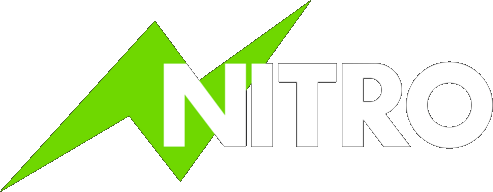🔥 Free 25% more CPU for all Accounts!
When it comes to web servers for your WordPress, the two most popular options are NGINX and LiteSpeed.
What Is NGINX?
NGINX is an open-source, high-performance web server and reverse proxy. It’s known for its ability to handle high traffic volumes and is optimized for serving static content efficiently. Originally developed as a solution to the C10K problem (handling 10,000 connections simultaneously), NGINX has become a favorite for WordPress users due to its speed and scalability.
Key Benefits of NGINX:
- Fast Static Content Delivery: NGINX excels in delivering static assets like images, CSS, and JavaScript files quickly.
- Low Resource Usage: Compared to traditional web servers, NGINX uses fewer resources while handling more simultaneous connections.
- Efficient Load Balancing: It can distribute traffic across multiple servers for improved uptime and speed.
What Is LiteSpeed?
LiteSpeed is a commercial web server known for being Apache-compatible, meaning it can easily replace an Apache server without major configuration changes. It’s optimized for speed, security, and overall performance and comes with its own proprietary caching system called LiteSpeed Cache, designed specifically for WordPress.
Key Benefits of LiteSpeed:
- Apache Compatibility: It can use .htaccess, mod_rewrite, and other Apache configurations, making the switch from Apache seamless.
- Built-in Caching: LiteSpeed Cache is powerful, offering easy configuration and excellent performance for dynamic WordPress sites.
- High Performance: LiteSpeed is built for speed, particularly with dynamic content, making it a popular choice for WordPress.
NGINX vs. LiteSpeed: Head-to-Head for WordPress
Performance
When it comes to handling static content, NGINX is slightly ahead of LiteSpeed, thanks to its efficient memory usage and optimized resource management. For dynamic content, like WordPress pages, LiteSpeed Cache gives LiteSpeed an edge in overall performance, especially for eCommerce or membership sites that rely on dynamic data.
However, if you implement caching solutions with NGINX, such as FastCGI Cache or Redis, NGINX can match or even exceed LiteSpeed’s performance.
Ease of Use
LiteSpeed wins in terms of ease of use, especially for those switching from Apache. It supports .htaccess, mod_rewrite, and other Apache configurations out of the box. For users familiar with these tools, LiteSpeed makes the transition seamless.
On the other hand, NGINX requires a bit more manual configuration. However, many web hosts simplify this process with pre-configured setups.
Cost
NGINX is free and open-source, making it a cost-effective option for many businesses. LiteSpeed, while offering a free version (OpenLiteSpeed), is generally a paid solution.
Compatibility
LiteSpeed’s compatibility with Apache makes it easier to manage for those coming from an Apache server environment. It natively supports many of Apache’s features, while NGINX requires alternative configurations and rewrites, especially for handling WordPress permalinks.
Security
Both NGINX and LiteSpeed offer robust security. However, NGINX‘s efficient architecture gives it a slight edge in preventing DDoS attacks due to its asynchronous, event-driven design. LiteSpeed compensates with features like built-in anti-DDoS protection, making it a solid choice for high-security environments.
Why UxNitro’s Apache + NGINX Reverse Proxy Setup
UxNitro Hosting uses Apache + NGINX reverse proxy to give you the best of both worlds for your WordPress site.WordPress relies on Apache’s features like .htaccess and mod_rewrite. By using Apache as the backend server, we ensure WordPress compatibility.
This means no headaches when setting up redirects, rewrites, or security rules. While Apache handles the complex backend requests, NGINX is used as a reverse proxy to handle security incoming traffic to deliver static content lightning fast.
Conclusion: Which Should You Choose?
If you’re looking for Apache compatibility and a powerful built-in caching solution, LiteSpeed is a strong contender. But if you need high performance, scalability, and an open-source solution, NGINX is a reliable option.
At UxNitro, our Apache + NGINX reverse proxy setup offers the perfect balance of compatibility, speed, and security. Whether you’re just starting out or scaling a high-traffic site, this configuration ensures your WordPress site runs at peak performance.
